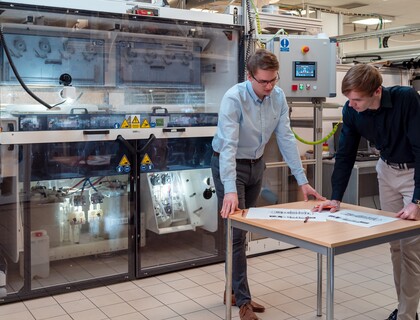
Filtration Breakthrough: Nanofilters Lead the Way in Automotive Innovation

Today's automotive industry has discovered the potential of nanotechnology. Lightweight nanomaterials, scratch‑resistant paints, nanofluids, and nanofilters have all found their place here, enhancing the quality of the air drivers breathe inside their cars or that is drawn into the engine to improve performance. Read in the following chapter how nanofilters clean the air inside a car.
- Advanced nanofilters ensure fresh air in cars and engine compartments
When applied to a filter, a layer of nanomaterial eliminates dust particles inside a car more efficiently. For example, the absorption rate for two‑micron particles is 40% for a conventional filter and approximately 89% for a nanofilter. Besides dust particles, nanofiber filters can also capture microbes.
This can be achieved by incorporating environmentally friendly additives into the nanofilters that filter the air inside a car. Gold, titanium dioxide, silver, and nanotubes made of titanium and copper yield the best results. For example, gold- and silver‑based antimicrobials are biocidal. They destroy microbes by interacting between the microorganism's negatively charged cell membrane and the positively charged biocide.
Applying NanospiderTM to automotive air filtration
NanospiderTM technology supplied by Elmarco produces nanofibers that are used as a layer to filter the air inside a vehicle and its engine. Air filters for cars first started to be developed in 1998. Combined activated carbon and particulate filters appeared earliest, followed by conventional dust filters. Nanofibers made with NanospiderTM technology have been an element of automotive air filters since 2012.
Installed as traditional air filters between the air intake opening and the air conditioning inside the car, the filters are made of a complex nanofiber "mesh" with activated carbon. They protect drivers not only from carbon monoxide and nitrogen dioxide but also from harmful particles up to 40% more effectively than current filters. These include microbial particles, pollen, soot, emission particles, and ultra‑fine dust particles up to 100 nanometers in size.
How do they filter the air?
- Air enters the filter through the front of the car.
- There, the nanofiber's ultra‑fine components capture and filter out harmful microscopic particles.
- The car's air conditioning system then passes the purified air through the interior, exiting through the air vents on either side of the rear.
References:
https://www.ncbi.nlm.nih.gov/pmc/articles/PMC6696398/
https://link.springer.com/article/10.1007/s12649‑017-9913‑1
https://product.statnano.com/product/10377/automotive‑air-filters
https://www.hindawi.com/journals/jnm/2021/7323885/
CHING, Yern Chee; SYAMIMIE, Nurehan. Effect of nanosilica‑filled polyurethane composite coating on polypropylene substrate. Journal of Nanomaterials, 2013.
RAMEZANZADEH, B., et al. An evaluation of an automotive clear coat performance exposed to bird droppings under different testing approaches. Progress in Organic Coatings, 2009, 66.2: 149–160.
AJDARY, Marziyeh, et al. Health concerns of various nanoparticles: A review of their in vitro and in vivo toxicity. Nanomaterials, 2018, 8.9: 634.


